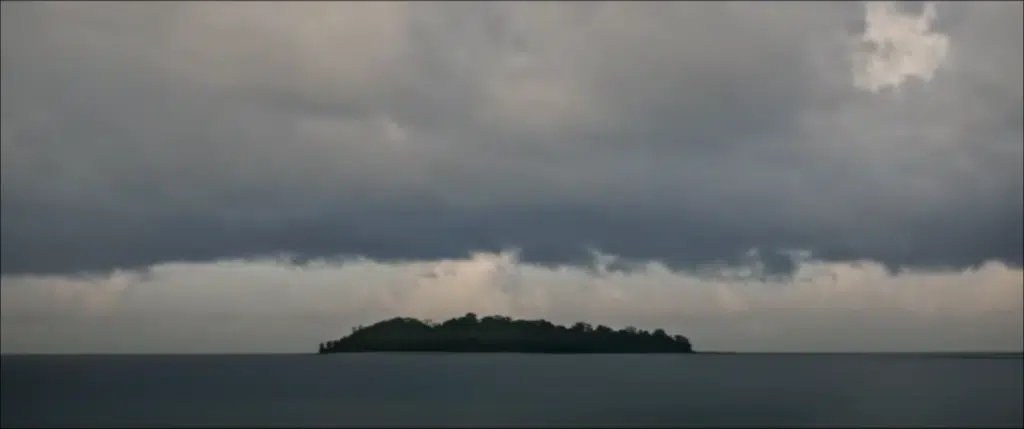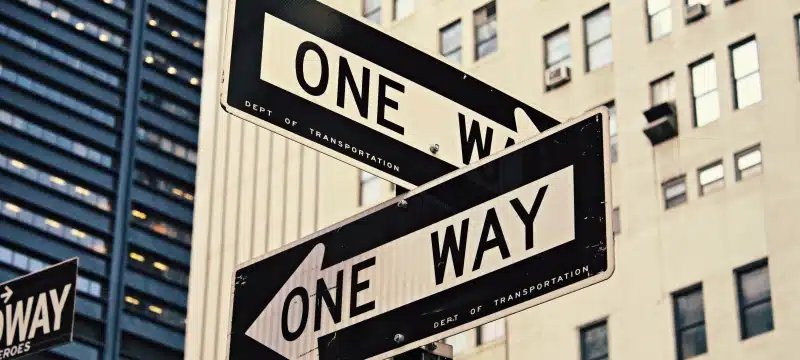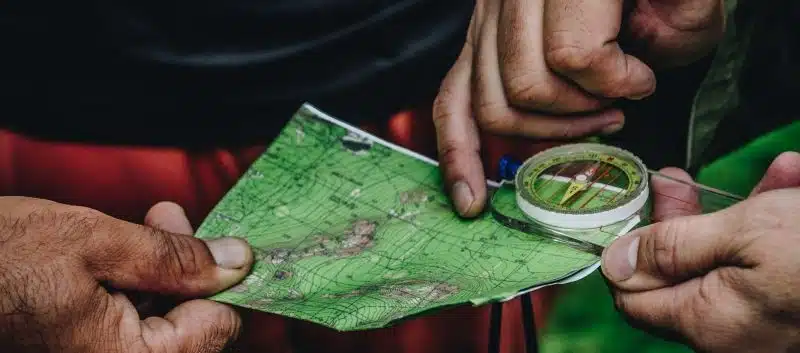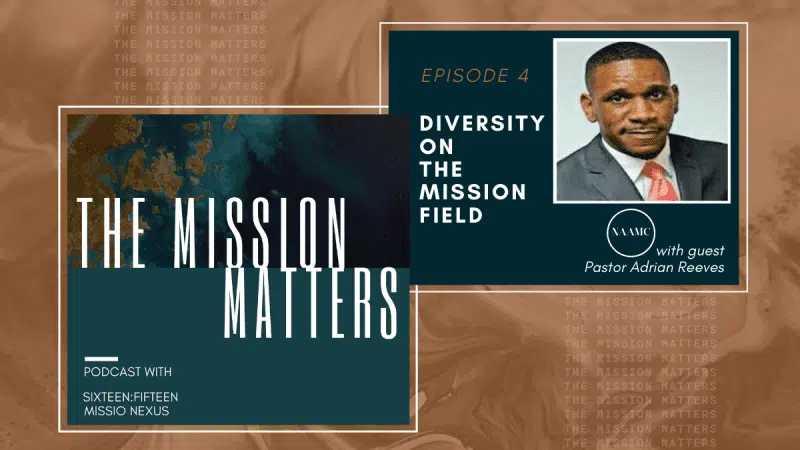John Chau and Missions to Uncontacted Peoples: The Rest of the Story


By Miriam Hayek
A Sobering Text Message
I awoke before six am on Nov. 18, 2018, to this text: “Morning, Miriam. I just got a message that indicates our friend (John Chau) may not be with us anymore…Our hearts are heavy now but we trust in the greater work of our God.” I had been receiving update texts through John’s friend for several days, and we had been praying fervently for the Sentinelese to accept him. We really believed, along with John, that they would. But we knew the other possibilities too. One of John’s last journal entries reads: “You guys might think I’m crazy in all this, but I think it’s worth it to declare Jesus to these people.” John decided to defy fear because he believed Jesus is worth it. And we agree.
John has been on my mind a lot since The Mission, National Geographic’s documentary about John Chau’s life, premiered at the Telluride Film Festival in August. The film is well-crafted, and presents several different perspectives on John and his life and motivations. But one particular perspective deeply disturbed me. It was that of Daniel Everett, a linguist and ex-missionary who spent decades among the uncontacted Piraha tribe in South America, learning the language, translating the Bible, and trying to convince them to believe in Jesus. He failed in his attempt, and lost his own faith in the process.
The Mission seems to present Everett’s story as the logical and necessary continuation of John’s work with the North Sentinelese, had he been accepted rather than killed. Everett points to all missions work and equates it universally with the evils of colonialism. These are his comments in Telluride, the weekend of the premiere:
“It’s the history of the world everywhere,” Everett noted, citing but one example: “The exploitation and destruction of societies in Australia by expatriate Brits who moved to Australia and got rid of the Aborigines…No contact with Indigenous people like this has ever been healthy. Not a single case that I know of. And it always leads to the degeneration of the society.”[i]
Everett’s comments are based in partial truth. There are some notable examples of missionary efforts that were shameful. Everett himself mentions the cruel treatment of Australian aborigines by so-called missionaries. He is correct that this sort of cultural destruction is disgraceful, and it certainly did not reflect the heart of Christ. Another example is the missionary efforts of the Portuguese Jesuits in Goa, India, in the 17th century. Their desire to preserve the “purity” of Christianity led to the cruel and oppressive Goan Inquisition, which stripped indigenous Hindus, Muslims and Jews of their basic human rights. Additionally, one of history’s most famous missionaries, the Scottish Dr. David Livingstone, rather confusingly equated following Christ with being commercialized and civilized (whatever that means!) In all three of these examples, and others, a case can be made that contact with indigenous people was far from healthy, and led to destruction and degeneration, indeed.
However, this is not the entire story. While we mourn the harm caused by some mission efforts, we also know that there are many examples to the contrary. I have personally met several missionaries of the utmost integrity who embarked on mission to uncontacted people groups. These missionaries brought not only physical and spiritual health to those tribes, but in some cases clearly saved those peoples from great harm or even extinction.
There is no objective reason to believe John Chau’s story would have ended as Everett proposes. God’s purposes for the North Sentinelese are far greater. The directors could have chosen any number of other missionaries, rather than Daniel Everett, to speak in The Mission. Many of whom would have moved even atheists to consider that John’s mission could have led to good.
The Rest of the Saints’ Story
A friend of mine was one of the first to respond publicly after John Chau’s death. And of all people, he probably has the most moral authority to speak on his choices and sacrifice. Steve Saint is the son of Nate Saint, who died on January 8, 1956, in the jungles of Ecuador. Saint, along with Jim Elliot and three others, was speared to death by Waodani warriors. The Waodani were a tribe who were almost completely uncontacted in the jungles and had a history of only violent contact with outsiders. Nate Saint and his partners felt called to reach the Waodani not only to share the Gospel, but also to protect them from encroaching danger from petroleum company workers and the Ecuadorian government. These non-Christian forces did not want anyone to establish peaceful contact with the Waodani, believing “the only good ‘Auca’ (a derogatory term used to refer to them, meaning ‘naked savage’) was a dead Auca.”[ii]
Saint and the others embarked on a weeks-long process to fly over Waodani territory, dropping gifts and building trust. They even had a peaceful encounter for several days with the first three Waodani who they met. But in the end, they were killed.
The Mission refers to Saint and his team briefly. It even mentions that Nate Saint’s sister, Rachel Saint, returned to the Waodani a year after his death and was accepted, along with Jim Elliot’s widow Elisabeth, and their daughter. The film shows Rachel Saint on television in the late fifties with Dayuma, the female Waodani who had befriended her, taught her the language, and helped her gain acceptance to the tribe.
What The Mission does not share, however, is the rest of this story. The Waodani, prior to 1956, had a 60% homicide rate. There was a prevalent practice of settling all disputes through spearing one’s enemy, and this often applied not only to large disputes, but to small ones as well. “By their own admission,” writes Steve Saint, “they were on the verge of killing themselves into extinction.”[iii]
Almost forty years after his father’s death, Steve Saint followed his Aunt Rachel’s example and moved his own family to live among the Waodani, at their earnest invitation. Steve Saint’s incredible story, as well as his father’s, is recounted in his book, The End of the Spear. Mincaye, the Waodani warrior who killed Nate Saint with his own hand, became a strong Jesus-follower, and adopted Steve as his spiritual son. When explaining his tribe before and after the contact initiated by these five missionaries, Mincaye said, “We acted badly…until they brought us God’s carvings (the Bible). Then, seeing his carvings and following his good trail, now we live happily and in peace.”[iv]
What did Daniel Everett say? “No contact with Indigenous people like this has ever been healthy.” It is possible that Everett is simply unaware of great moral changes that missionaries achieved among the Waodani, although I find this dubious. More likely the bitterness of his own abandoned faith poisoned his perspective. But this is only one example. Are there others?
The Yosts’ Story
Another friend of mine is Jim Yost, who went with his wife Joan to Irian Jaya, Indonesia in 1977. They had set their hearts to go to the hardest tribe on the island, the Sawi, who were both headhunters and cannibals. “If God can become incarnate, like man,” Jim said, “surely we can become like the Sawi people. Become one heart, one mind. Not preaching at them, but showing them Jesus in their everyday lives.”[v]
Jim spent their first three years learning the language and beginning to translate the Bible, while his wife Joan used her medical skills to serve the desperate needs that the people suffered from malaria, malnutrition and wounds from weekly tribal wars. Witch doctors began to oppose their message and threatened the people with great harm if they followed Jesus.
One day, Jim and Joan were awakened by wails of grief. They went to the river bank, where a thousand tribal people were gathered. The men were searching the shallows of the river for a one-year-old child who had fallen into the dark waters. When someone found him, after more than a half hour, the boy was bloated with water and not breathing. Joan administered CPR for 20 minutes, until she gave up, realizing the little boy was completely dead.
Jim felt a gift of faith in those moments, and started praying, “God, even though these people don’t acknowledge you as their Lord and Savior, as a sign of your love and mercy, allow this little boy to live again.”[vi]
Suddenly, the water spewed out of the boy’s mouth, and he was alive! As everyone celebrated, Jim explained that God had raised the child. A week later, they were invited to share more about Jesus, and waves of people started following Him, until more than 80% of the Sawi became believers.
This led to the abandoning of their brutal practices of headhunting and cannibalism, as well as greater peace between warring tribes. Jim and Joan began literacy schools for the people in their own tribal language that eventually led to public schools in the national language of Indonesian that prepared them for the “outside world” which was coming upon them. They have not only adapted to new influences from the outside but have excelled in moving forward as a tribe that knows their identity in God as seen in the first Sawi receiving a Ph.D in Anthropology from the University of Cenderawasih in 2021.
The more we read mission history, the more Everett’s assertion that “No contact with Indigenous people like this has ever been healthy” rings hollow. But these examples are relatively recent. What about earlier missionaries? Were they all as destructive as the Jesuits in Goa or as misguided as David Livingstone?
Mary Slessor’s Encouraging Story
Mike Frost’s new book on the history of Christian missions, Mission is the Shape of Water, has drawn my attention to even more examples that disprove the absolutism of Everett’s claims, showing numerous missionaries who promoted justice and health while also respecting the local cultures where they served.
The first Protestant missionaries, the Moravians, began sending people abroad in 1731, and were well known for joining the indigenous people they served in their suffering and poverty in order to advocate for them.
William Carey, inspired partly by the Moravians, launched to India in 1793. Carey fought against the burning of widows, a barbaric custom in India during his time. He can hardly be accused of destroying Indian culture when he is considered by some Indians as “the father of Modern India.”[vii] r what about Alice Seeley Harris, a missionary and acclaimed photographer, who stood up against the heinous atrocities of King Leopold of Belgium in Congo in the late 19th century.
An outstanding “freedom fighter” highlighted in Frost’s book was Mary Slessor, a Scottish missionary who went to Nigeria in 1876. She began working among several uncontacted jungle tribes, and chose to live among them deep in the interior (which was quite unusual for any missionary, let alone a single female, at that time). She became fluent in their language, learned their culture, and even went barefoot as they did!
She discovered that they practiced both cannibalism and twin sacrifice. The tribe believed the birth of twins indicated the wrath of their animistic gods, and they forced all mothers of twins to take their newborns into the jungle and leave them to die. Women who refused were also ejected from the tribes themselves. When Slessor discovered this, she traveled the jungles saving twin babies and adopting them.
Eventually, she built a mission station among the Okoyong tribe with housing for the babies and some mothers, as well as a school. Eventually the majority of the tribe chose to follow Jesus and stopped practicing human sacrifice. The tribe re-named her “The Mother of All Peoples.” I believe that the Okoyong would disagree with Daniel Everett. In no way did Slessor cause the degradation of their society.
Why These Stories Differ From Everett’s
Frost helpfully quotes missiologist Benjamin Beckner about another mission work among a tribe in Southern Africa:
The French mission to the Basotho is a clear counter-example of the largely imaginary and revisionist caricature of nineteenth century missions as the puppet and pawn of imperialist power…. (these) missionaries…, whose work issued in an authentic, autonomous, and indigenous African church, and, ultimately, in a nation, demonstrated exemplary anthropological methodology, linguistic skill, and cross-cultural aptitude.[viii]
Clearly, Daniel Everett’s critique of all missions to uncontacted tribes as unhealthy is unmerited.
Christianity Today published a perspective similar to my own, but backed with much more extensive research, in 2014. In her article “The Surprising Discovery about those Colonialist, Proselytizing Missionaries,” Andrea Palpant Dilley asserts that “one stereotype about missions is that they were closely connected to colonialism. But Protestant missionaries not funded by the state were regularly very critical of colonialism.” Dilley’s article focuses on the extensive research of Robert Woodberry published in 2010, concluding the following:
“Areas where Protestant missionaries had a significant presence in the past are on average more economically developed today, with comparatively better health, lower infant mortality, lower corruption, greater literacy, higher educational attainment (especially for women), and more robust membership in nongovernmental associations.”[ix]
Woodberry’s conclusions strongly challenge Everett’s remarks. Rather than missionary influence being unhealthy and degenerative, Woodberry found their influence to be central to the foundations of development and even democracy, especially in the 19th century.
There are a key distinctives that led to the missionaries I have described here contributing to the flourishing of the culture they went to, rather than its degeneration.
My husband and I defined our own key values 10+ years ago when we first embarked on mission to the Middle East, and I believe these are reflected in the stories I have shared. They are:
- Openness to the Holy Spirit
- Obedience to Jesus’ commands
- Local (indigenous) leadership
- Respecting culture
- Church and disciple multiplication
I won’t describe all the nuances of these values here, but the missionary stories above exemplify them, and these were some of the keys to their success. The Saints respected the culture of the Waodani and lived among them at great cost to their own comfort, as did the Yosts and Slessor. All of these people stressed obedience to Jesus and his New Testament commands. They raised up local leaders and encouraged them to multiply disciples.
Perhaps most importantly, they were open to the Holy Spirit. In each of these stories, there are accounts of miraculous healings, supernatural strength, and divine discernment and wisdom. The Yosts even saw a dead child raised to life! This, sadly, may be the key value that Everett lacked in his own mission. While he is a genius linguist and probably a good anthropologist, there is no indication in the story that he recounts in the film that he had experienced an intimate walk with Christ and was filled by the Holy Spirit.
I know that my friend John Chau was trained in all of the above values. He had been pursuing that training for many years. I also know John was intimate with the Holy Spirit, and talked to Him daily. While I do not understand entirely why John died so soon, I have no doubt he was asking the Holy Spirit for guidance on the night before he swam to the island for the final time. And I believe he heard from the Holy Spirit and obeyed. And because of that, I am greatly honored to call him my friend.
I know John’s story is not over, and neither is the story of the North Sentinelese. The Lord will not stop pursuing them with His love. Perhaps one day we will understand why God allowed John to be killed. For now, I remain confident that he obeyed the Lord to the best of his ability. I also believe that if he had been accepted, he would have contributed to the flourishing of the North Sentinelese, through the power of the Holy Spirit.
Miriam Hayek is first and foremost a beloved daughter of Father God. She is also a wife and a mom. She loves cooking, hiking, reading, writing poetry, and traveling. She has been befriending Muslim-background people, and coaching others to do so, since 2005.
[i] Matthew Carey, “‘The Mission,’ About Young Man Killed In Attempt To Convert Indigenous Islanders, Triggers Passionate Response In Telluride,” Deadline.com, Sep. 4, 2023.
[ii] Steve Saint, The End of the Spear, p.33.
[iii] Saint, p. 50.
[iv] Saint. p. 80.
[v] Yost, Jim, https://www.movements.net/blog/blog/2020/8/19/230-jims-story.
[vi] Yost, Jim, https://www.movements.net/blog/blog/2020/8/19/230-jims-story.
[vii][vii] Vishal & Ruth Mangalwadi, The Father of Modern India: William Carey.
[viii] Mike Frost, Mission is the Shape of Water, p. 119.
[ix] Andrea Palpant Dilley, “The Surprising Discovery about those Colonialist, Proselytizing Missionaries,” Christianity Today, Jan. 8, 2014.
This article is submitted by Miriam Hayek, a Missio Nexus member. Member organizations can provide content to the Missio Nexus website. See how by clicking here.





Responses